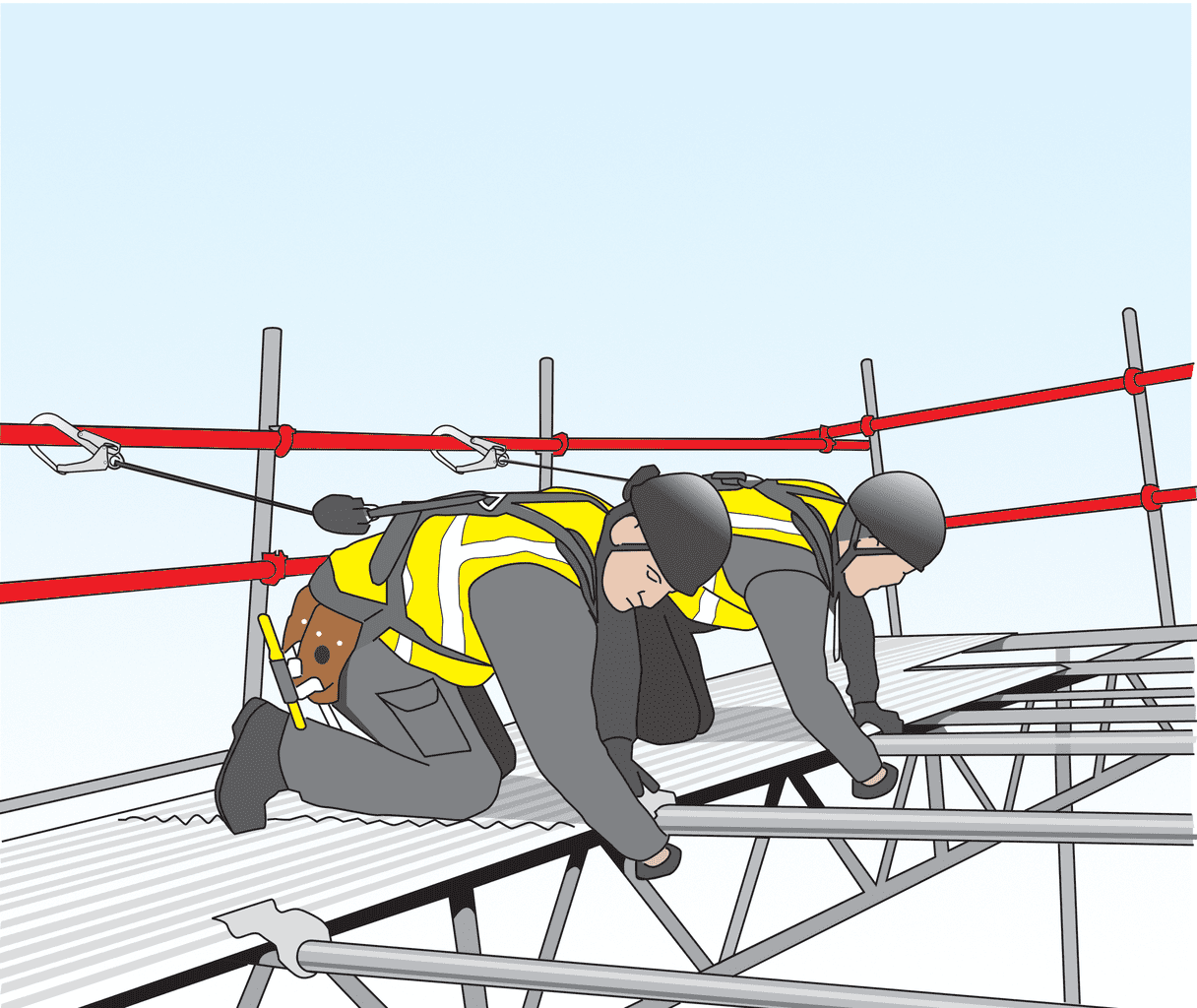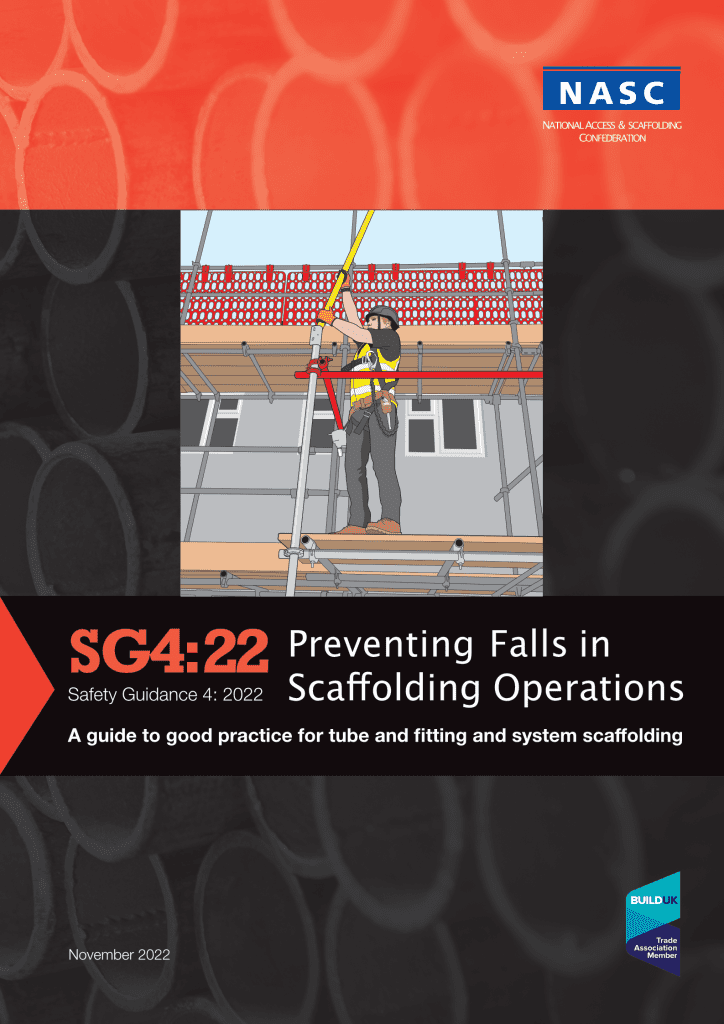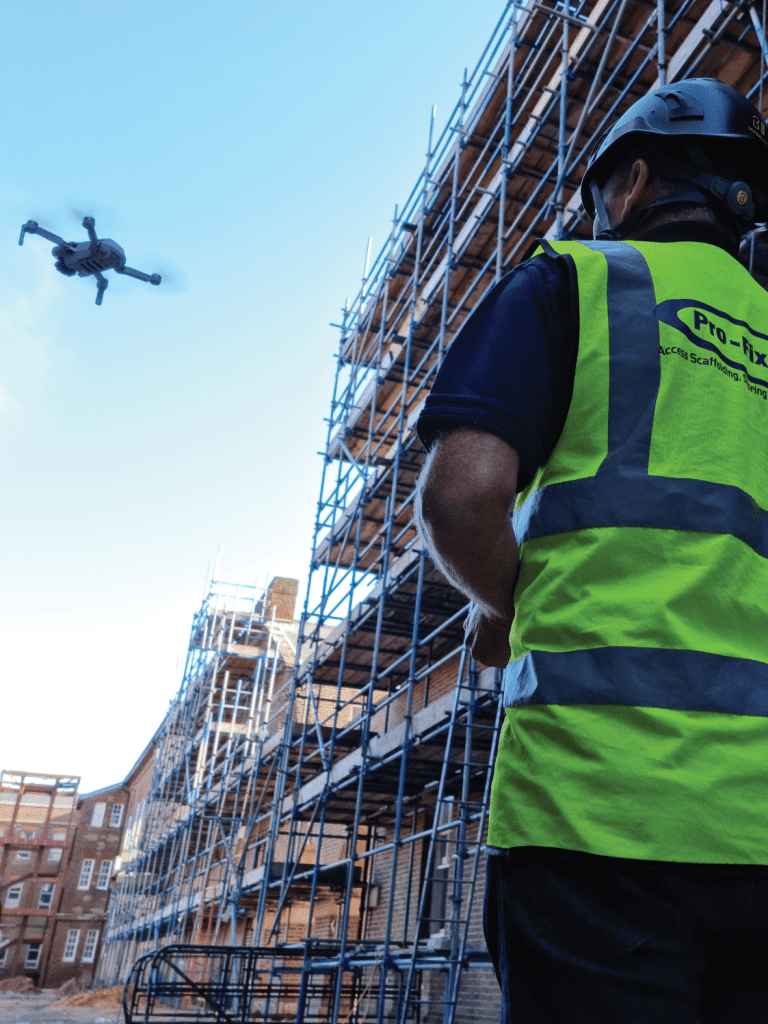Ahead of the launch of the 2022 revision of SG4, Scaffmag spoke with Alan Harris about the guidance and what we can expect to see in NASC’s flagship guidance note.

Alan Harris is the chair of the National Access and Scaffolding Confederation (NASC) Health and Safety Committee and also heads up the working party tasked with the revision and update of the NASC’s flag-ship safety guidance note SG4:22 ‘Preventing Falls in Scaffolding Operations’. Like most of the volunteers that give up their time to support the confederation, Alan is the owner and managing director of a scaffolding contractor, Pro-Fix Access Limited based in Titchfield, Hampshire, and is very much an operational scaffolding contractor.
Does the guidance need updating?
One of the ongoing aims of the NASC is to ensure its guidance remains current and reflects the needs of, not only its membership, but the wider access and scaffolding industry. As an objective we try to ensure all of our safety guidance is reviewed and where necessary updated at least every 5 years. We also made a commitment to the Health and Safety Executive to continually review industry practices and ensure the guidance remains current. This review started back in 2019 and has unfortunately been delayed through the pandemic.
The aim of the review is to ensure that the guidance features methods of work and equipment that reflects current industry good practice. The working party have considered accident learning, legal cases, enforcement action, good industry practices and new technology for fall prevention and protection.
To ensure the guidance remains current, obsolete products and methods of working that are no longer in common use have been removed. New sections have been introduced or further guidance provided to protect scaffolders and support employers in establishing safe systems of work.
How has accident learning influenced this revision of SG4?
Sadly, we are still seeing fatalities and life-changing injuries in our trade as a result of falls from height and many of these tragic accidents are absolutely avoidable. As a result of fatal accidents to scaffolders since the last revision particularly, we have added specific guidance for working on traditional temporary roofs erected in situation and working on or near fragile surfaces.
We have updated the guidance with some new case studies, although some of the original case studies remain as they are still very powerful lessons, that should not be forgotten.
You have worked your entire career in the access trade, how has SG4 changed the industry, in your experience?
Having worked for the biggest scaffolding contractors through to owning my own SME scaffolding business, I have experienced most aspects of our industry, from large industrial sites through to town and street works. Over the last 20 years I have seen a major difference and increase in professionalism by our trade. I am pleased to see the gap between the professional scaffolding contractors, who are trying to do the right thing and, let’s say, the others, grow significantly and is now becoming a chasm. I genuinely believe that SG4 has played a significant part in changing the culture of our industry and raising the standards of safety. The accident statistics within the NASC membership speak for themselves and we have seen an 87% reduction in the number of falls since 1999 and that is despite an increase of nearly 50% in the number scaffolders working for our members.
Of course, you don’t have to look very far in many of our towns and cities to see examples of unsafe practice. So, as an industry we can’t rest on our laurels and the confederation and other industry stakeholders, like the Construction Industry Scaffolders Record Scheme (CISRS), still need to keep promoting good practice. Our clients now have a heightened awareness of scaffolding industry good practice through the publication of guidance such as SG4 and often play a major part in changing attitudes towards unacceptable risk taking by scaffolders. The marketplace for scaffolding contractors who ignore good practice is gradually getting smaller, in my opinion. And as a business owner the frustrations of losing work to competition who cut every corner in the book is still a factor but is getting smaller.
What can our readers expect to see changed in the forthcoming edition of SG4?
When we set out on this revision and assembled a representative group to oversee the processes, the consensus of opinion in the group was that, SG4 is working and would potentially be a light-touch revision. Although the main guidance remains principally the same, we were surprised how much had actually changed in a relatively short period of time since the last revision in 2015. I believe that is a reflection of how industry practices are evolving and how scaffolders are embracing the most effective methods of working, innovation and seeking to improve.
NASC has yet again entrusted the writing of the guidance to Simon Hughes of SIMIAN, as technical author. As chair of the working party, overseeing the revision, I would be pleased to explain some of the key changes and new guidance we are hoping to introduce.
Embracing Technology
The guidance continues to follow the principles set out in the hierarchy of prevention and protection embodied in the Work at Height Regulations 2005. The best way to prevent falls is avoid work at height altogether. Unfortunately, by virtue of the fact that someone has decided to employ a scaffolding contractor, this usually means the opportunity to avoid work at height has been missed. However, we continue to see innovation by scaffolding contractors and designers enabling modular building and therefore avoiding more complex work at height. However, for the majority of the industry work at height can’t be avoided and is an inherent part of our trade.
One area that has seen an opportunity for avoiding work at height is through the use of technology. The use of drones, digital mapping and 3D modelling of buildings is making surveying and temporary works engineering more accurate and much safer.
Fragile Surfaces
Following two fatal accidents involving scaffolders falling through fragile roofs, we have expanded the guidance for working on or near fragile surfaces. This includes information for employers and scaffolders for assessing and controlling the risks associated with potentially fragile surfaces.
System Scaffolding
Since the inception of SG4, the guidance has recommended that suppliers and manufacturers of proprietary system scaffolding are responsible for providing instructions for the safe erection and use of their products. NASC has recommend that the principles of prevention and protection in SG4 should be adopted by the manufacturers. One area of concern that the working party were asked to consider was the installation and removing of system decking on partially boarded structures. This edition will include guidance on systems of work for handling decking whilst avoiding the need to climb the structure relying solely on personal fall protection equipment (safety harnesses).
Updated for Technical Guidance
The guidance has been updated to reflect changes brought about by the revised NASC technical guidance TG20 last year. Examples include updated illustrations such as TG20 loading bays.
Working with Beams
Scaffolders continue to innovate and devise safer methods of working, one area where we reflected industry good practice are examples of safer working with beams. The revised guidance includes more applications for working with beams using temporary boarding and collective protection, including the erection of gantry scaffolds.
Temporary Roofs
The HSE continue to support the working party and have provided input throughout the process. One area of particular concern raised by the authority was related to the construction of traditional temporary roofs, following fatal falls from height during these scaffolding operations. SG4 now includes some basic principles that should be embodied into the design of such temporary roofs and planning of safe systems of work by scaffolders.
Other additions to guidance include the benefits of using climbing type helmets in scaffolding operations and guidance for third party contractors installing sheeting to scaffolding structures.
When are we likely to see the new SG4 launched and when will our readers see the guidance in full?
We are close to completing the management guide and work has starter on the pocketbook user guide. Following feedback from the NASC Council, it is hoped that the recent changes will be ratified and then we can start the process of seeking support from the HSE with a foreword. We are aiming for completion and publication in time for the NASC AGM in November.
Following the launch, the management guide will be added to the suite of guidance notes accessed through the NASC ePortal. Hardcopies of the guidance will be available to purchase via the NASC.
This article was first published in the ScaffMag Magazine Issue 17




